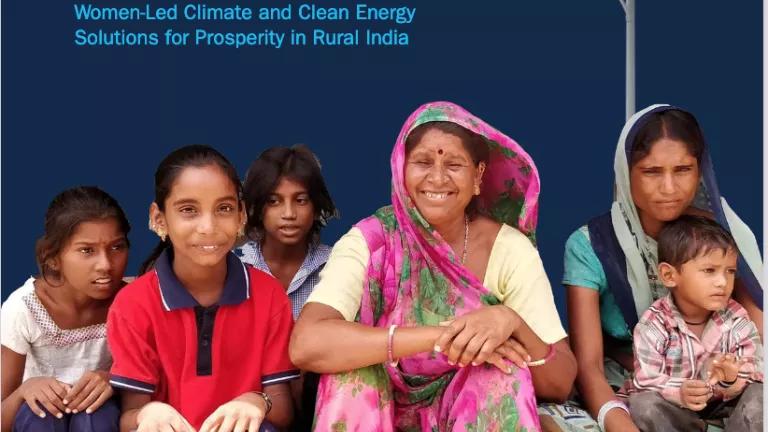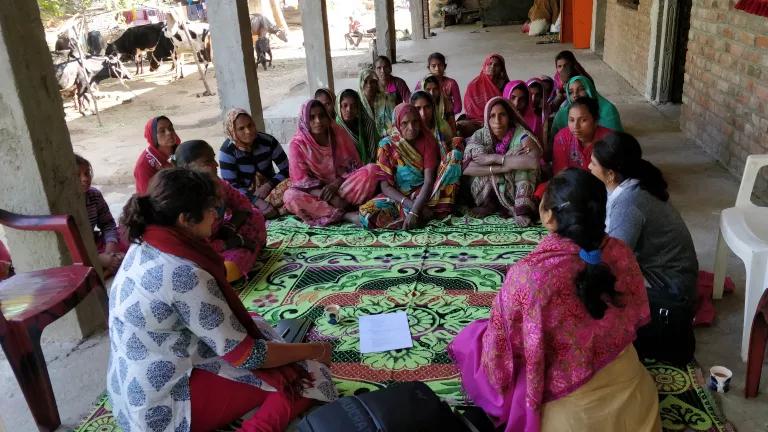Solar Mini Grids Increase Income and Create Jobs
A new case study underscores the importance of pairing energy services with capacity development services to ensure that communities in India can utilize electricity to improve their livelihoods.
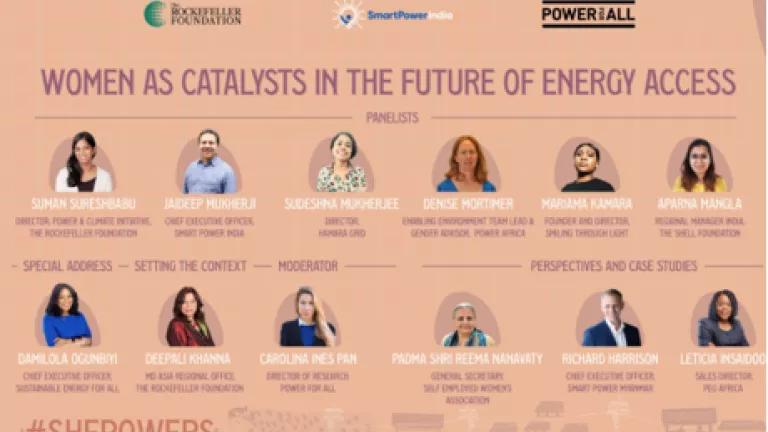
During the UN High-Level Dialogue on Energy 2021, India highlighted the urgent need for energy access for all. Equity was another key focus of the UN dialogue, with women and low-income communities at the center of the clean energy transition in India and around the world. To deepen the discussion on the role of women, leaders came together for a virtual roundtable to highlight opportunities in energy access, including mini-grids. A newly released case study, Creating Jobs and Income: How Solar Mini-Grids Are Making a Difference in Rural India, highlights the importance of solar mini-grids in accelerating energy transitions and creating jobs in India.
India, one of 20 Global Champions on energy access, was a convening leader during last week’s UN High-Level dialogue on Energy. Minister of Power and New and Renewable Energy Raj Kumar Singh stated at the virtual dialogue, “it will require strong political commitment and innovative ways of expanding energy access, promoting renewable energy and increasing energy efficiency.”
Despite the tremendous progress in electrification, energy poverty and poor energy quality remain persistent challenges in many rural villages across India, especially during the COVID-19 pandemic. The development of reliable off-grid solutions presents an opportunity to embrace distributed renewables and improve energy reliability.
Distributed solutions, such as solar mini-grids, can help reduce energy poverty, boost electricity demand, create jobs, and complement national electrification efforts. However, energy services alone will not yield sustained livelihood benefits. Capacity development initiatives and a gender equity focus are needed to ensure that mini-grid power sustains livelihood improvements for all.
Women as Energy Access Catalyst
Smart Power India, a prominent mini-grid provider in India, hosted a webinar in partnership with The Rockefeller Foundation and Power For All to underscore the importance of women’s leadership in accelerating energy access. “Women as Catalysts in the Future of Energy Access” brought together a diverse group of stakeholders from donors to civil society organizations to discuss gender equity, as well as how mini-grid power benefits both men and women.
Padma Shri Reema Nanavaty from the Self Employed Women’s Association (SEWA) discussed the importance of women as catalysts in rural India. SEWA and NRDC have partnered on several projects to promote female leadership in rural villages, including work on Green Village Plans and Worth Their Salt. Women are often at the forefront of energy transitions. They constitute at least 50% of the consumer base, but are often not explicitly considered in solutions. They also suffer the most acute impacts of energy poverty. Including women in the decision-making processes from the inception of a project and designing inclusive solutions – tech, policy, and skill development – can help reduce energy poverty and transform rural economies.
Source: Smart Power India, 2021.
Solar Mini-Grid Case Study
The new case study, Creating Jobs and Income: How Solar Mini-Grids Are Making a Difference in Rural India, was discussed at the Smart Power round table. Developed by NRDC and partners - Council on Energy Environment and Water (CEEW) and Skill Council for Green Jobs (SCGJ) - the case study is part of a series on renewable energy jobs. The study underscores the importance of pairing energy services with capacity development services to ensure that communities can utilize electricity to improve their livelihoods. The study showcases how mini-grids can improve the quality and reliability of electricity supply, provide jobs, and create new opportunities in rural India, by borrowing on experiences from distributed renewable energy providers across India, such as Mlinda and Smart Power India.
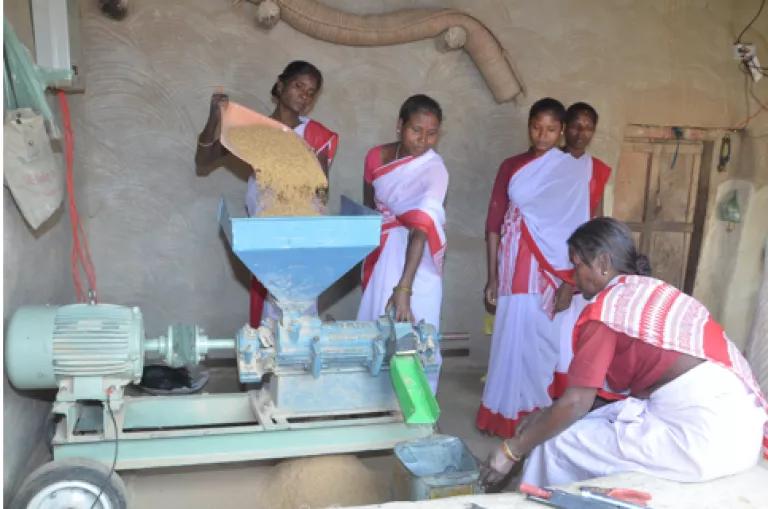
Group of women operative a milling operation powered by a solar mini-grid in India.
Source: Mlinda, 2019.
Key Findings
- Mlinda has connected nearly 7,000 households to their community mini-grid network, providing electricity to 35,000 to 40,000 people. The company couples energy services with capacity-building initiatives, such as entrepreneurial training, technical workshops, and electricity awareness programs; these activities help the community stimulate demand for electricity and have been key to Mlinda's success.
- Mlinda’s community mini-grid deployment efforts have created an estimated average of 986 jobs based on NRDC-CEEW-SCGJ analysis. These jobs include 180 direct full-time jobs, 131 full-time equivalent (FTE) jobs from contractual work, and 675 productive-use jobs through additional entrepreneurial activities.
- Households are willing to pay a higher tariff for electricity if paired with reliability, sufficiency, and services to improve livelihoods. Policy support and incentives have the potential to bring down distributed renewable energy costs, which in turn can make access to reliable electricity and development services more affordable for households.
- An estimated 619,000 to 1,134,000 direct and productive use jobs could be created by adding 1,000 MW of new mini-grid capacity if Mlinda’s “energy services and development-based” business model is replicated.
- “Energy and development services-based” business models for distributed renewable energy can create jobs, enhance incomes, and support local economic growth while supplementing the national governments’ electrification efforts.
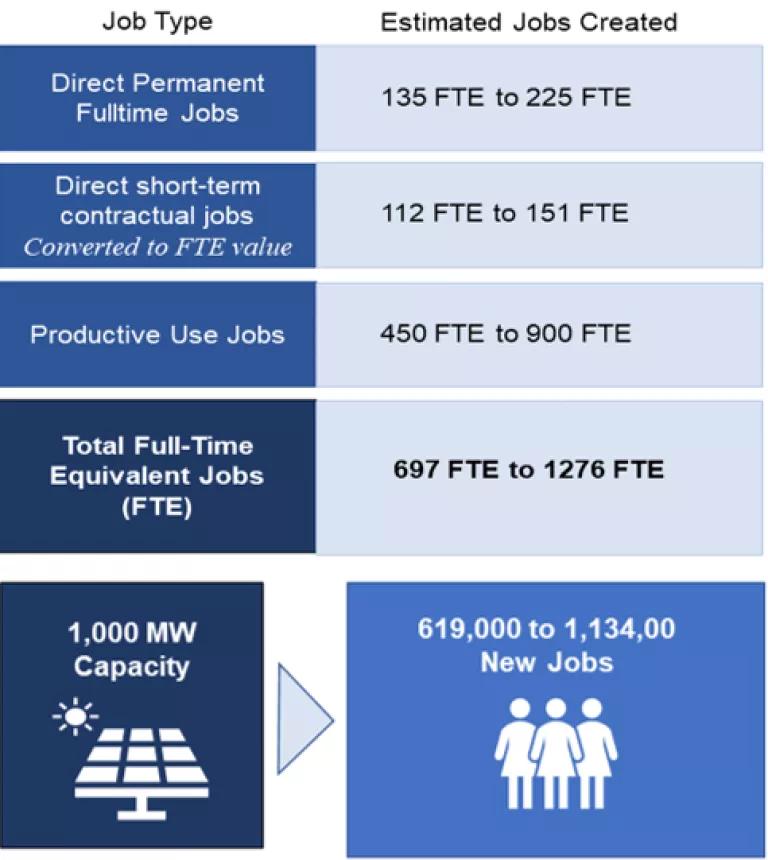
Source: NRDC-CEEW-SCGJ analysis, 2021.
Mlinda, Smart Power India, and the other distributed renewable energy providers included in the case study show that mini-grids are a viable solution to bridge rural energy accessibility gaps and create jobs. Promoting the use of distributed renewable energy sources is an opportunity to leapfrog fossil fuels and ensure newly electrified communities embrace and start with clean energy sources. Spurring distributed renewable energy growth can help India achieve both its emission reduction and energy access targets.
Madhura Joshi and Marie McNamara contributed to this blog post.
Highlighted Jobs Case Studies from NRDC-CEEW-SCGJ
Filling the Skill Gap in India's Clean Energy Market: Solar Focus - Issue Brief (PDF)
Clean Energy Powers Local Job Growth in India - Report (PDF)
Surging Ahead: Scaling India's Clean Energy Market Through Jobs and Financing - Issue Brief (PDF)



